Some good advice before chili harvesting.
When our peppers are beautifully blooming, we are already watching them and waiting for the fruit to start growing from the flower. I know this is a bit of a superficial explamiation, but our everyday observation is still focused on these well-observable changes, and the meaning of our activity (plant cultivation).

Yes, yes… well, firstly, the flower (pistil) has to be fertilized, otherwise we are waiting for a miracle in vain. At the same time or after the fertilization process, significant changes occur in the pistil, the fruit starts to develop, but – and now I would like to deal with this – the fertilized ovules develop into the seed (semen).
But what is a seed actually?
It can be bought in a small packet and can be purchased and planted during spring.

If we want to know more about the seed, we need to dig a little deeper into the relevant literature.
„The seed of higher order plants is the result of sexual processes. It enables reproduction, survival and dissemination of the species.” (Jacob-Jager-Ohman: Botanical Compendium)
Before we start, we also need to reflect on the terminology. You can buy seeds. They can be metal-coated and (currently fashionable) isolated… and there is the „plain”, unbranded seed, about which and its prehistory we don’t know much.
Metal-protected seed
One who wishes to produce seed goes to the authority dealing with this and starts working within the framework agreed upon with the authority. Of course, the authority approving the seed production process (field inspection, laboratory tests) is repeatedly monitored throughout the year. After this, the certification of the produced seeds can be requested. The official seed testing laboratory examines the sample, and if the results of the examination meet the conditions specified in the laws, the item can be marketed with the official seed certificate issued.
Previously, seed bags were secured with a metal seal, hence the name „metal-sealed.”
Nowadays, the seal is a metal tag made from a special material that is equipped with anti-counterfeiting markings. This tag has a number, the metal seal number, which is assigned when the seed is packaged from a large unit. This number can be found on the seed bag.
Look for the date on the label! Not the packaging date, but the authorization date. Although seeds can be sprouted for four to five years, choose the „younger” seed if possible!
Isolated seed
A characteristic expected from a seed is to be variety-identical. It will be variety-identical – I won’t deal with hybrids or hybridization now – if the flowers’ pollen of the same variety fertilizes the plant. This can be self-pollination (self-pollinating), or another, same-variety individual (foreign pollination). This guarantee is also examined (among others) during seed cultivation, but in this case, there is no official supervision during cultivation (there is no supervision at all), but the producer takes responsibility for the variety identity of the seeds. Cross-pollination, interbreeding can be prevented with protective distances, which is usually hundreds of meters, or by isolating the plant being cultivated from other plant’s pollen. This is not an impossible task, but not an easy one either! There are pollen-trapping nets that need to be placed so that foreign pollen does not reach the plant and its flowers. We can also isolate in a separate greenhouse, in which case the greenhouse openings need to be equipped with pollen-trapping nets. If we do it well, we can create reproductive material of the same value as metal-sealed seeds, but – like so many other services or products – it is a matter of trust whether we accept these seeds or not. There are many different producers, honest and dishonest, …we don’t live on the Moon.
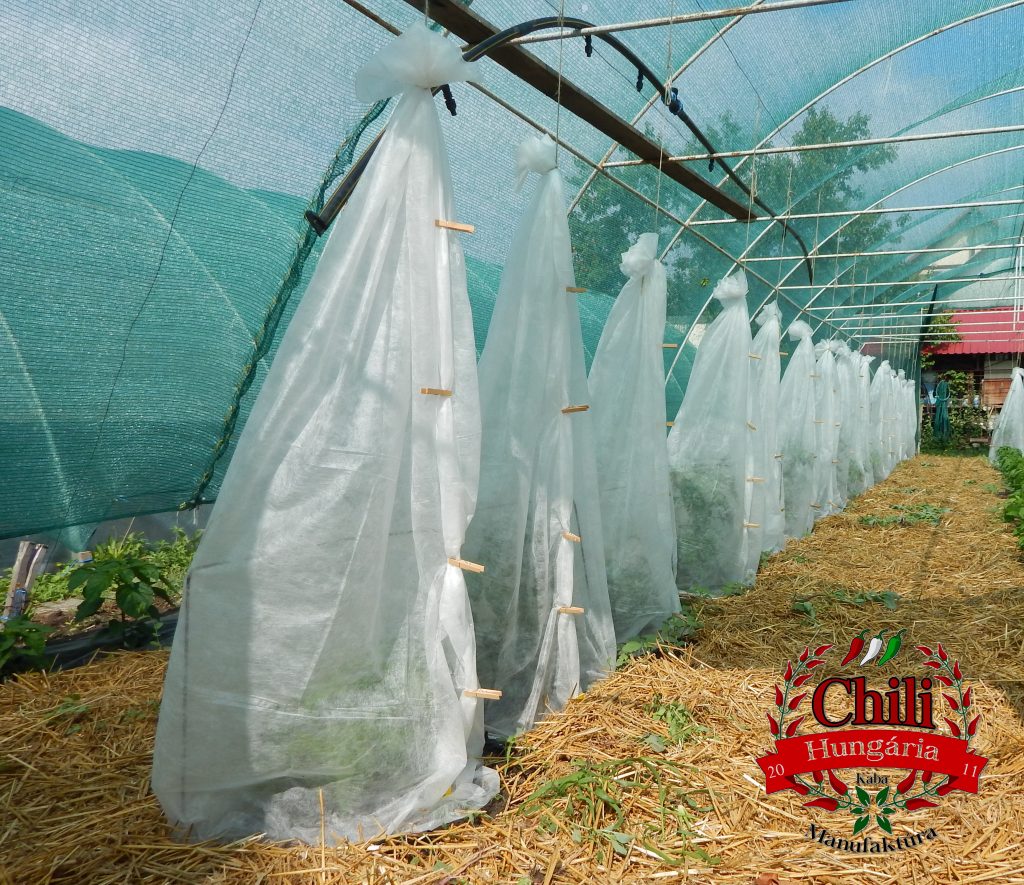
„Plain”, seed without any markings
This is a 50-50 chance. We know nothing about the history of the seeds. You may encounter good and not so good ones.
I have bought seeds from many places. There were good purchases and bad ones too. From places where I was not satisfied with the seeds I simply did not buy more. I recommend this to everyone.
The formation
When the first flower bud appears on the chili plant, the seed capsule (ovary) begins to form inside, with the style and the sticky stigma at the end. Inside the seed capsule (loculum ovarii), we find the seed primordia (ovulum).
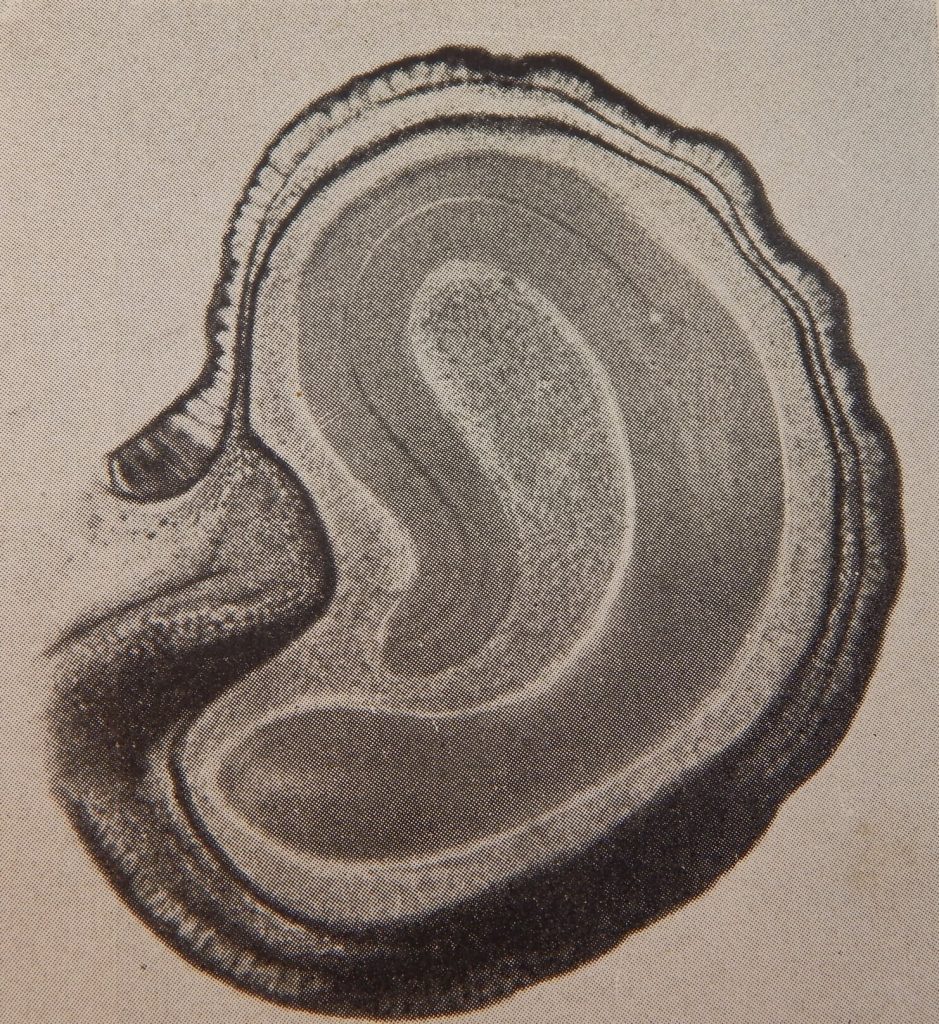
After fertilization, the embryo development process begins in the seed primordia. The cotyledons form, begin to grow, and then store reserve nutrients (fats, proteins, carbohydrates) in the seed, which will cover the future seedling’s nutrient needs until it becomes capable of independent nutrient uptake and organic matter production. The shell also forms, with two layers, an inner soft layer and an outer hard layer. Sometimes it is too hard, I will talk about this later.
By the time our fruit is ripe, the seed is ready to grow into a new plant under certain conditions. When it will be placed under the right conditions, it does not and cannot know.
It waits till then!
The seed, in reality, is a plant in a dormant state. Until it is subjected to certain influences or receives certain stimuli that encourage it to exit from this dormant or sleeping state, it can remain as a seed for years. Usually, it retains its germination capacity for 4-5 years.
In the case of our indeterminate pepper plants, the seeds grow scattered on the central column (placenta) and the septae (veins) under the protection of the fruit flesh.

The surface of the seeds is smooth, flattened kidney-shaped, their color is usually light yellow, their size is approximately 3 mm.
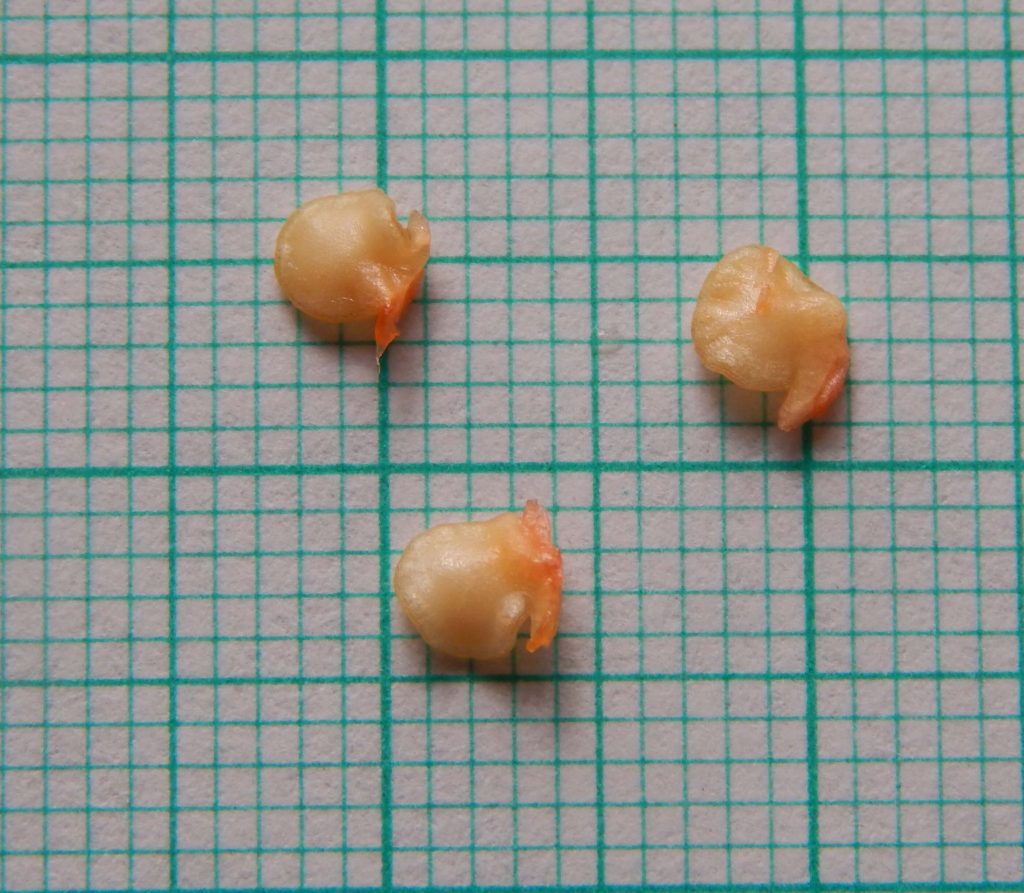
However, when the moment arrives when the circumstances permanently change for the better, the germination process begins, the radicle axis develops, one end with the radicle (root initiation), the other with the shoot tip (shoot initiation).
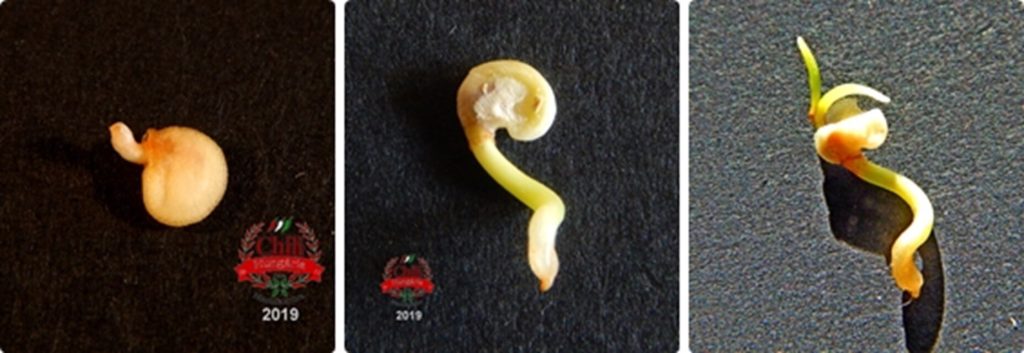
What are the conditions that start the growth of the small plant sleeping, more accurately, under the seed coat?
The first condition is the presence of water.
Germination starts with the uptake of relatively large amounts of water. The dormant, sleeping state ends, the cells swell under the seed coat, at the same time the seed coat softens. Germination inhibitors (if any) break down. The increase in volume cracks the softened seed coat and at the same time the reserve nutrients are mobilized and nutrient transport begins to the growing parts of the embryo. The cracked seed coat helps cellular respiration since cell division begins rapidly during germination and the cells need oxygen. This brings us to the second germination requirement:
The presence of oxygen
The third very important condition …
is the existence of germination temperature.
In this part of the process, the radicle of the sprout emerges and penetrates the soil, anchoring it, then later supplying it with water and nutrients. The shoot tip or shoot initiation also emerges from the seed coat and rises upward.
In the case of peppers, at 26 to 28 degrees, usually within 5-7 days, the characteristic hook-like shoot emerges above the soil surface.
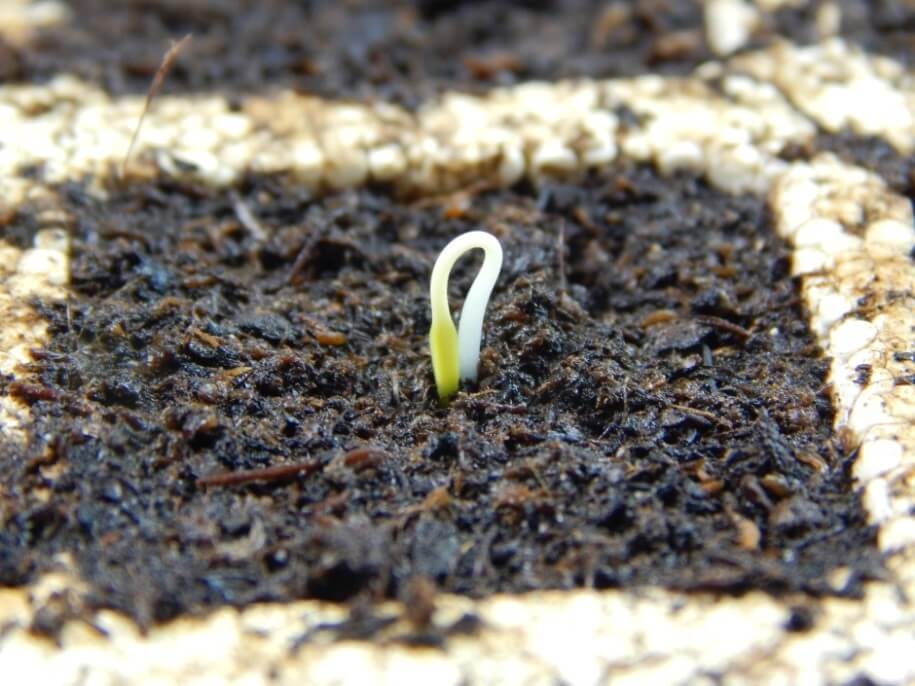
The lack of any of the three conditions will prevent or „ruin” the germination. The planting depth also affects the process. The general rule is that the optimal planting depth is twice the diameter of the seed. In this case, it is 6-8 mm, depending on the size of the seed. Sometimes the seed is slightly smaller or larger than average. If germination occurs at the same time, the seedling may not appear on the surface of the soil at the same time. If we can’t guarantee the planting depth to the millimeter, there may be slightly deeper or shallower nests, where a slightly smaller or larger seed is placed. And of course, there are many other variations. This is when we experience a delay in germination. When planting in trays, whether individually or scattered and later thinned out, this dilemma of delay confronts the grower: Should I leave the tray in a warm place to help the slower or deeper germinating seedling, or lower the temperature, as the early emerged stock may become elongated abnormally? Every grower decides according to their own discretion!
The planting medium should be loose and have a fine grain, according to the planting medium. Various Baltic peat blends, with 0-5 or 0-6 fractions, have proven to be successful. The fine grain is important because the soil should surround the seeds to maintain moisture, but it should also be loose to fulfill the need for oxygen, as mentioned above.
The water used for irrigation is also very important!
In this state, low EC water is desirable. On the one hand, the seeds do not need any nutrients because they have „stored” supplies, and on the other hand, they could not take them in anyway because there is nothing yet. If we handle our stock with water with high EC due to added nutrients or itself, a hypertonic phenomenon can occur, where the cell not only does not take in water but also loses water, causing it to wilt, which can be explained by the osmosis phenomenon. The cell walls can be seen as partially permeable membranes, where there is a solution of a certain (variable) concentration inside the membrane, and there is also a solution of a certain, also variable concentration outside the membrane. In the process of osmosis, the flow occurs from the less concentrated liquid to the more concentrated, in our case from the external wet environment to the more concentrated solution inside the seed cell. This is what we want. If we interfere roughly, this process will reverse, and from our good intention to grow nicely and quickly, we will cause a tragedy. Moreover, we do not know what has happened, only that the pepper will not germinate
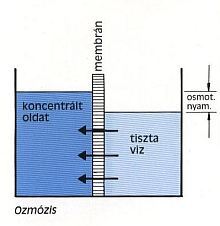
I mentioned EC twice and deviated from the topic a bit, but it is still an important information, so let’s talk about it in two sentences: „EC measurement is nothing more than measuring conductivity, the abbreviation EC itself comes from the beginning letters of Electrical Conductivity (which is referred to as conductivity in scientific language). Since dissolved salts conduct electricity very well, the conductivity of the solutions is proportional to the concentration of the dissolved salts, or the TDS value. The TDS value is also an abbreviation made from the beginning letters of English words (Total Dissolved Solids).”
source: moderngazda.hu
So, if our device shows a higher value, our solution is more concentrated.

In the germination phase, as I mentioned above, we should strive for the lowest salt content water to be discharged, but later use irrigation water of appropriate value according to the plant’s development (phenological) state. Of course, the irrigation water also has its own „EC”, since we do not use distilled water. We are talking about excellent irrigation water with an EC of less than 0.5. (I have 0.56, which is still pretty good).
Anomalies
The seed can also be a bit stubborn and simply refuse to germinate that year, but it germinates perfectly the next year. We don’t know the answer, specialists say for this phenomenon that the seed „sleeps”.
As early as 1940, tests were conducted to determine germination rates, and the results depicted in the figure were obtained. The subject of the experiment was corn, but the methodology is clearly illustrated. In one year, no seeds germinated, but the following year they resumed growth.
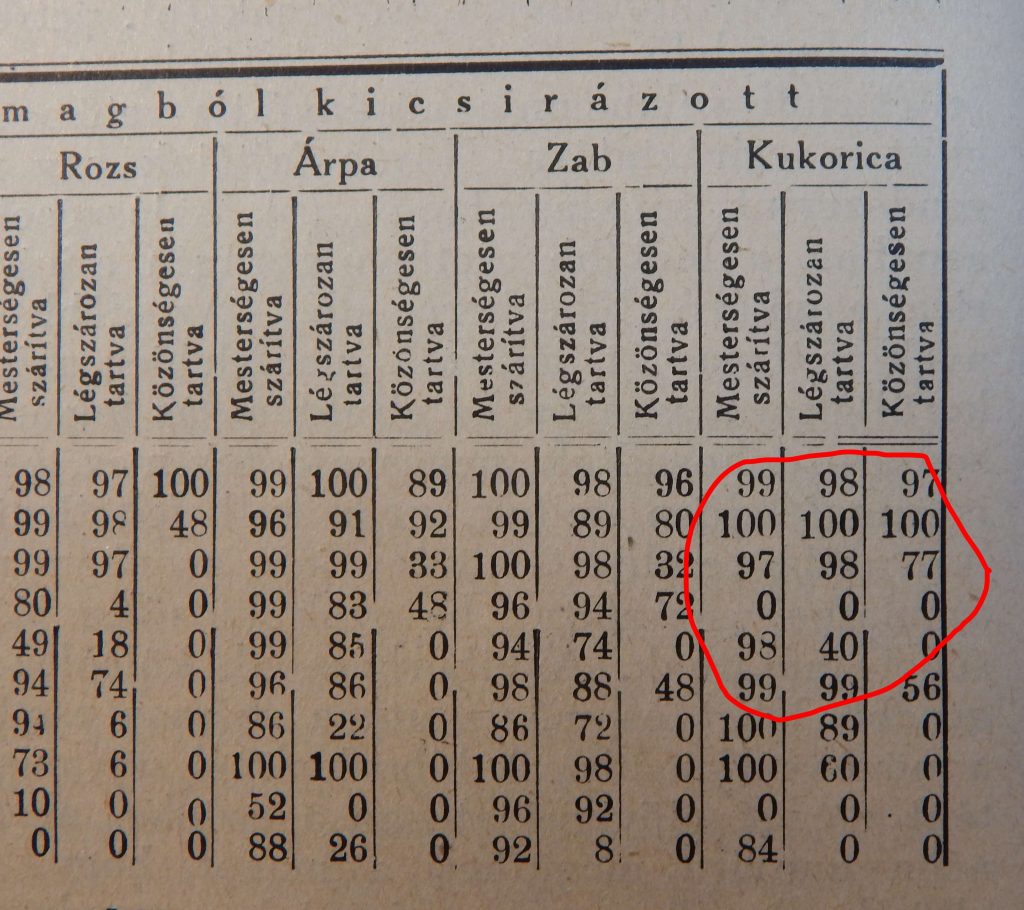
I must note here that, in my experience, the germination rate of capsicum chinense varieties is slightly worse, or more sensitive during the germination phase, compared to the well-known domestic annuum varieties. In practice, almost 100% of annuums germinate, while certain chinense varieties can be considered good at 80-90%.
The weak germination vigor may be explained by the non-softening seed coat, which can cause significant losses in this phase. This is called „hard-coatedness” by experts. The seed coat is not soft for these seeds for a reason, as plants and especially berries can be nibbled by various animals in nature. A well-fed animal can carry the eaten seed away, and after passing through the digestive system, the seed empties out of the body. To endure this journey – meaning the digestive journey – the seed must be able to withstand it without being „digested.” The germination-inhibiting substances found on the surface of the seed also help in this survival.
This is a natural protection from the seed, but after 4-5 days of being kept moist, this hardness disappears and the coat cracks due to the aforementioned internal tension. In this case, we are talking about pathological hard-coatedness, which can lead to the death of the plant. As users, we only experience the „result”, namely, that the seedling does not emerge, or emerges with a typical abnormality, with the seed coat on its „head.”
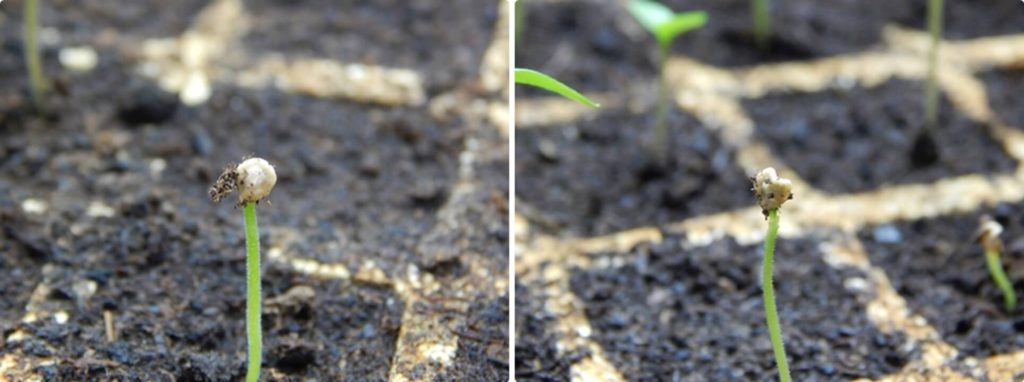
In this case, a good farmer tries to twist, stretch, and soften the hard seed coat, but it may be more difficult to free the seedling from its captivity.
…And if we have passed these phases, our beautiful, healthy, seedling-free plants wave back at us!

Fun facts
When the flowers have been fertilized, the seeds start to develop along with the fruit. During growth, the seed produces growth hormone, helping and encouraging the fruit to reach its final size and shape. If we see a noticeably deformed, curved pepper in our crops, and this is not characteristic of the variety, we can justifiably suspect the following phenomenon:
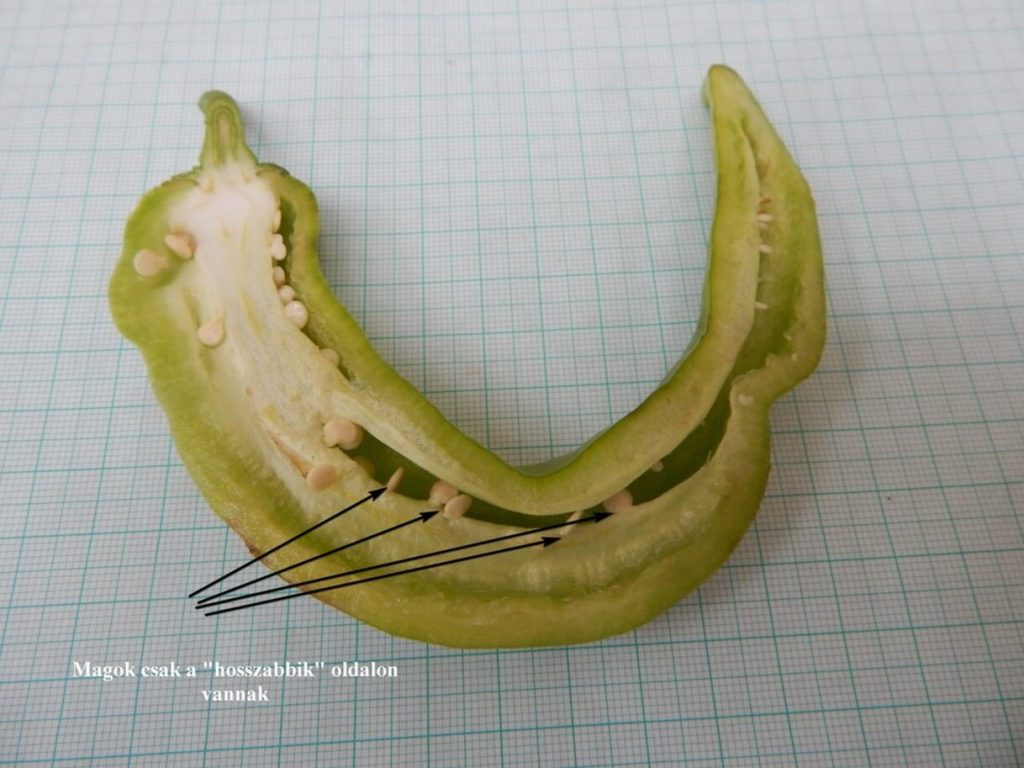
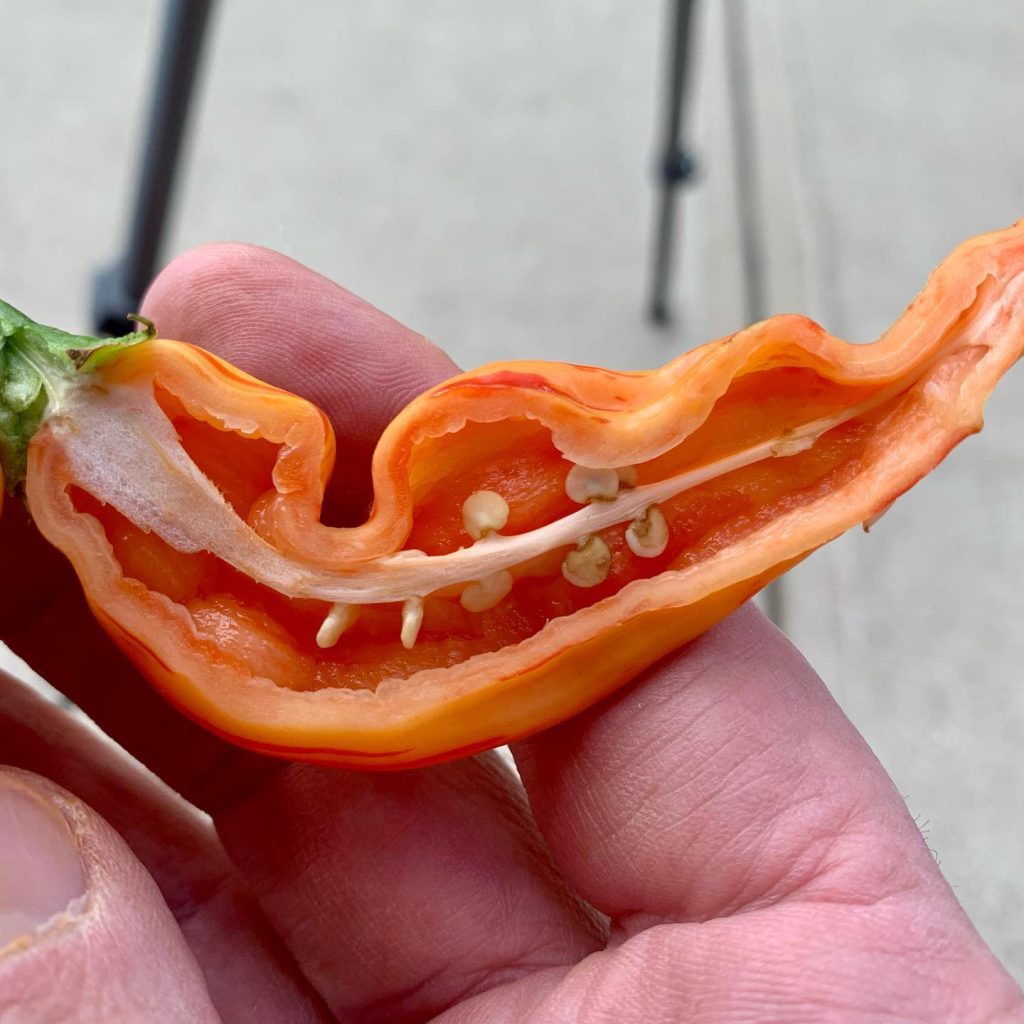
As we can see, the seeds producing growth hormone are located on the „longer” side of the cavity wall, while there are no seeds on the „short” side and it has grown more stunted. This is the cause of the curvature and distortion in this case.
Here, the seed from which the plant sprouted can still be located even after several months have passed.
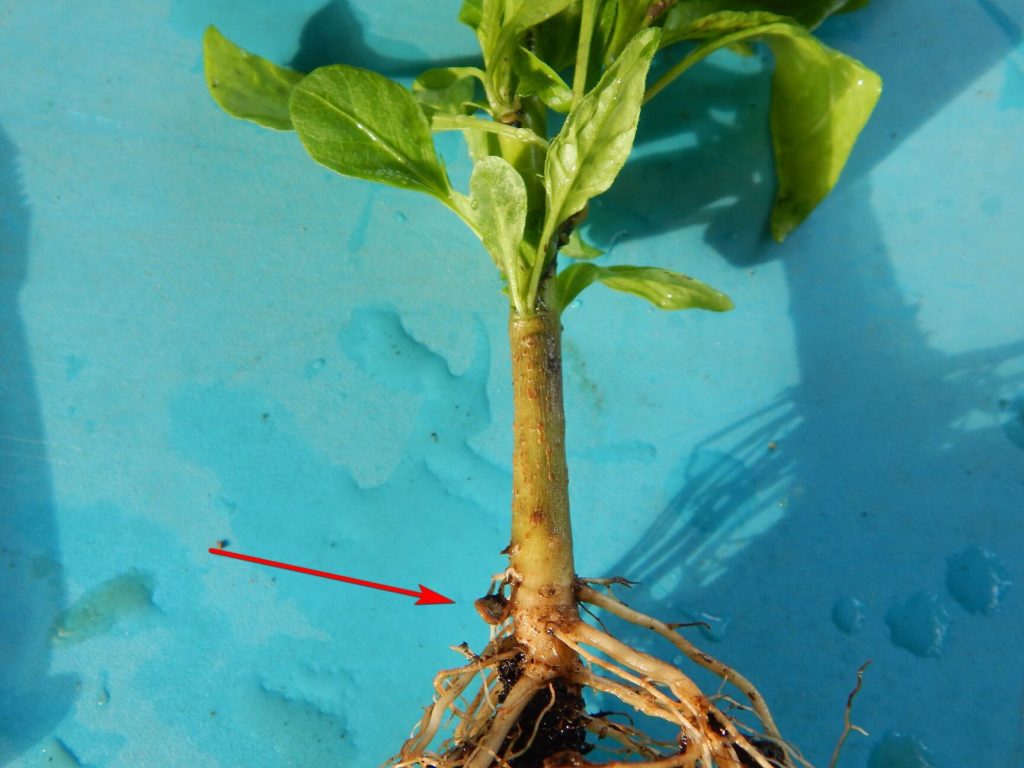
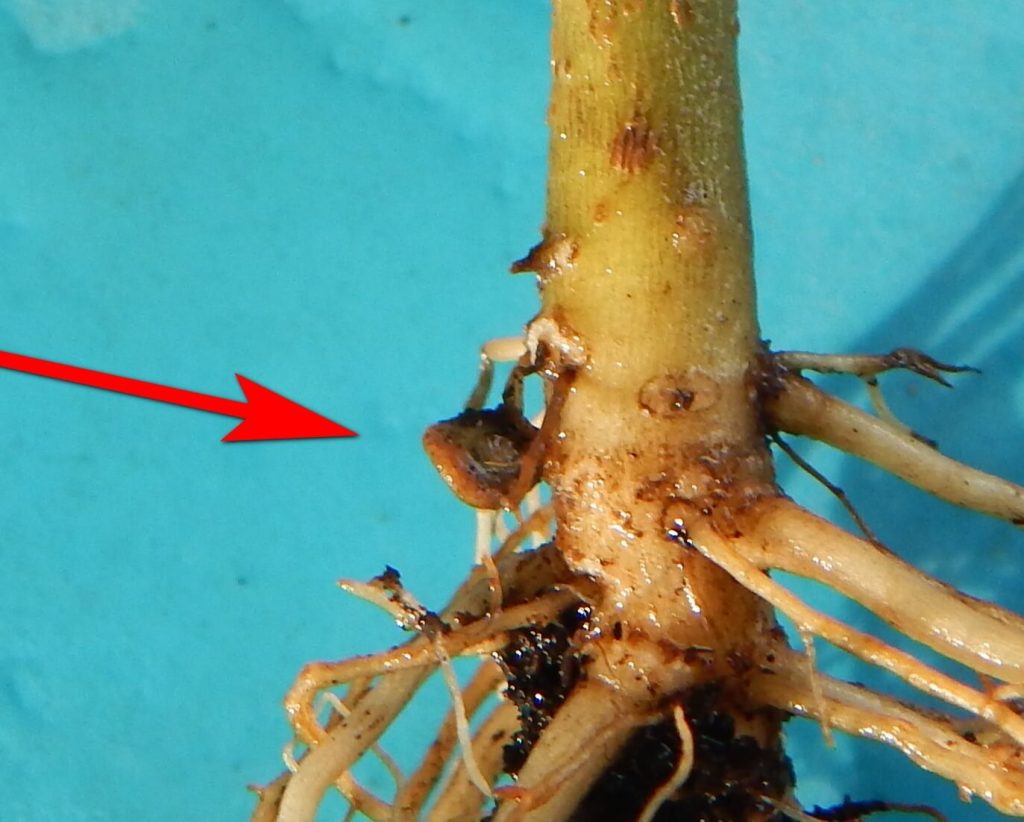
With this in mind, I wish everyone a successful harvest, and I am available to provide additional information for anyone who is interested.
If you’re looking for something spicy, you’ll find a wide range of options in our online store. Simply click here to start shopping!
Thanks for taking the time to read this! Please note that any untagged photos are the property of the author.
Sources:
Dr Turcsányi Gábor: Mezőgazdasági Növénytan
Raul H. Francé: A növények élete
Jacob-Jager-Ohmann: Botanikai Kompendium
Dr Villax Ödön: Növénytermesztés







